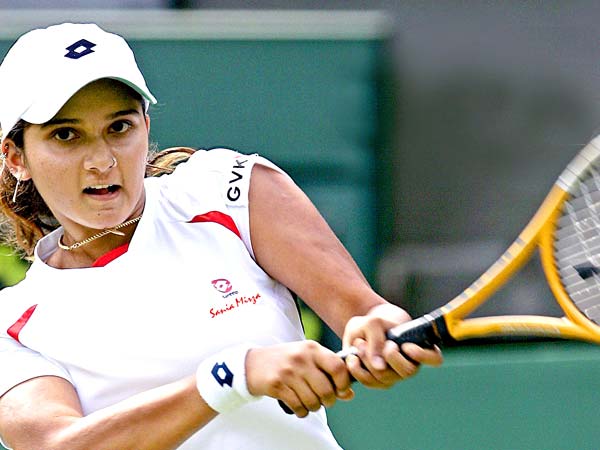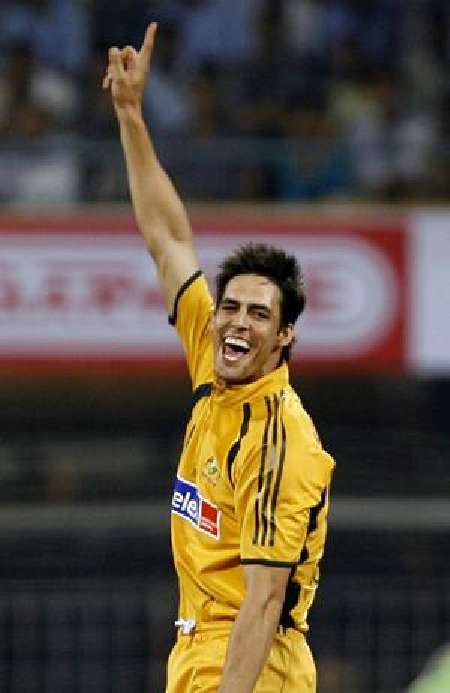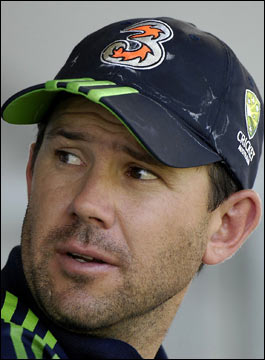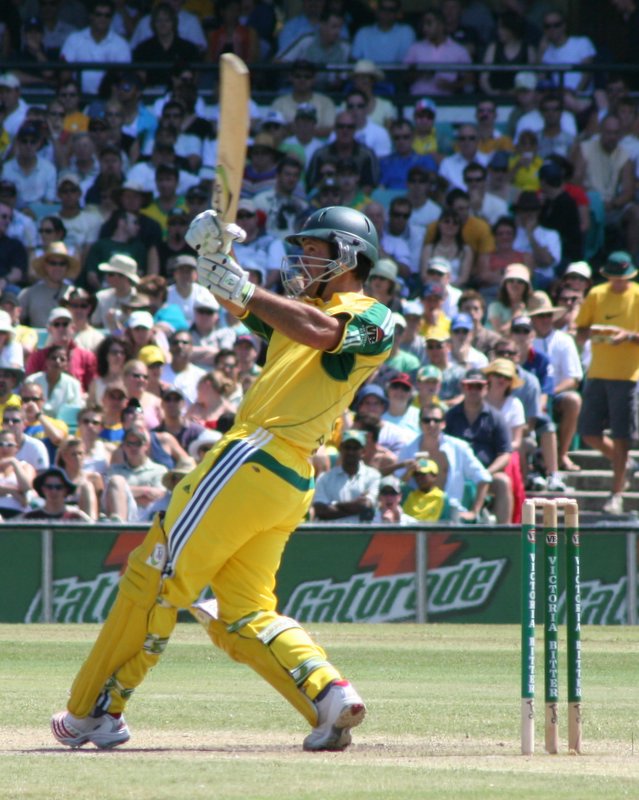This Blog is about Ricky Ponting Australian Cricketer Biography and Photos and Videos
Ricky Ponting Biography
Full name
Ricky Thomas Ponting
Born
19 December 1974 (age 36)
Launceston, Tasmania, Australia
Nickname
Punter
Height
1.76 m (5 ft 9 in)
Batting style
Right-hand
Bowling style
Right-arm medium
Role
Batsman
International information
National side
Australia
Test debut (cap 366)
8 December 1995 v Sri Lanka
Last Test
29 December 2010 v England
ODI debut (cap 123)
15 February 1995 v South Africa
Last ODI
13 April 2011 v Bangladesh
ODI shirt no.
14
Domestic team information
Years
Team
1992 –
Tasmania
2004
Somerset
2008
Kolkata Knight Riders
Career statistics
Competition
Test
ODIs
FC
List A
Matches
152
362
255
434
Runs scored
12,363
13,406
21,332
15,762
Batting average
53.51
42.69
55.98
42.25
100s/50s
39/56
30/79
73/94
34/94
Top score
257
164
257
164
Balls bowled
539
150
1,434
349
Wickets
5
3
14
8
Bowling average
48.40
34.66
54.85
33.62
5 wickets in innings
0
0
0
0
10 wickets in match
0
n/a
0
n/a
Best bowling
1/0
1/12
2/10
3/34
Catches/stumpings
178/–
155/–
270/–
187/–
Ricky Thomas Ponting (born 19 December 1974), nicknamed Punter, is an Australian cricketer, a former captain of the Australian cricket team between 2004 and 2011 in Test cricket and 2002 and 2011 in One Day International cricket. He is a specialist right-handed batsman, slips and close catching fielder, as well as a very occasional bowler. He is regarded as one of Australia's finest cricketers in the modern era. He represents the Tasmanian Tigers in Australian domestic cricket and played in the Indian Premier League with the Kolkata Knight Riders in 2008.
Ponting made his first-class debut for Tasmania in November 1992, when just 17 years and 337 days old, becoming the youngest Tasmanian to play in a Sheffield Shield match. However, he had to wait until 1995 before making his One Day International (ODI) debut, during a quadrangular tournament in New Zealand in a match against South Africa. His Test debut followed shortly after, when selected for the first Test of the 1995 home series against Sri Lanka in Perth, in which he scored 96. He lost his place in the national team several times in the period before early-1999, due to lack of form and discipline, before becoming One Day International captain in early-2002 and Test captain in early-2004.
After being involved in 151 Tests and 352 ODIs, Ponting is Australia's leading run-scorer in Test and ODI cricket, with more than 25,000 international runs as of July 2010. He has scored 39 Test centuries—behind only Indian Sachin Tendulkar (51), and South African Jacques Kallis (40)[1]—and third for most runs in ODIs behind Tendulkar and Sanath Jayasuriya.[2]
Ricky Ponting remains the most successful Australian captain of all time, with 48 victories in 77 Tests between 2004 and 31 December 2010, while as a player he has taken part in 99 victories, the most by anyone in history.
Early Australian domestic career
After scoring 114 not out in club match against Riverside, Ponting became the youngest player to appear for Tasmania in a Sheffield Shield match, breaking Boon's record by 14 days.[19] In November 1992, with Ponting just 17 years and 337 days, he strode out to the crease at number four against South Australia at the Adelaide Oval.[20] Despite scoring 56 in a 127-run partnership with Boon, he could not prevent a defeat, scoring just four in Tasmania's second innings.[21] In his first match in Tasmania, this time against New South Wales, Ponting contributed 32 and 18 in a draw. He followed this up with 25 against Western Australia in a narrow loss. His first match in Sydney also marked the debut of future Australian opening bowler Glenn McGrath. His subsequent century also meant that Ponting became the youngest Tasmanian to score a first-class century at 18 years and 40 days, eclipsing Boon's record of 19 years and 356 days.[21] After scoring another half century, Ponting scored back to back centuries against Western Australia on Australia's fastest wicket in Perth.[22] He become the youngest batsmen in Shield history to score twin centuries in a match. After setting a goal of scoring 500 runs in the season, he ended up scoring 781 at 48.81. After season's end, Ponting played seven four-day games for the Australian Academy, scoring 484 runs at 96.70, even though he was still only 18.[23]
Speculation ignited that Ponting was an outsider to join the Australian squad on their 1993 tour to England. Despite Ponting's reluctance to weigh into the debate, Tasmanian coach Greg Shipperd though he could handle the experience.[24] The selectors ended up choosing Western Australian batsman Damien Martyn for the tour, with Ponting selected in the Academy squad captained by Justin Langer, which toured India and Sri Lanka for seven games in August–September 1993. Australian success was limited, with only several wins. No batsman scored a century, despite Ponting reaching 99 not out in a one-day game in Colombo. He finished the tour second highest in the aggregates, behind Langer.[25] Before the start of the 1993–94 Sheffield Shield season, Ponting stated that he wanted to score 1000 runs for the season.[25] In Tasmania's final match of the season, they needed to defeat South Australia outright to qualify for the final. Set 366 in 102 overs, Ponting scored 161 in a 290-run partnership that ended with Tasmania needing just 41 runs for victory. Despite Tasmania losing four quick wickets, they won with four wickets in hand.[26][27] Disappointingly for Ponting, he could not repeat the performance in the final against New South Wales, scoring just one and 28, as Tasmania were defeated by an innings and 61 runs.[28] The season saw Ponting score 965 runs at 48.25, close to his 1000 run goal.[26][29]
A month after the final, he was again selected for the Academy squad for three limited overs matches against a touring Indian team. Queenslander Stuart Law captained the Australian side that included former Australian keeper Rod Marsh. In Australia's victory in Canberra he top scored with 71 and before scoring 52 in victory in Sydney. The last match was also successful for the home team, with Ponting not required to bat.[30]
Ponting started his 1994–95 campaign with a century against eventual Shield champions Queensland in Brisbane, impressing Queensland captain Allan Border, "He's just an outstanding prospect," Border said. Speculation once again arose that Ponting could become a candidate for upcoming tour to the West Indies. When Tasmania played Western Australia at Bellerive Oval on 4 November 1994, Ponting scored 211. The century was his fifth successive against Western Australia-Sir Donald Bradman is the only other batsman to score five consecutive centuries against another state in Shield history.[31] Ten days after the double century, Ponting was named in the Australian XI to take on England at Bellerive Oval—in a match that was used as practice before the upcoming series in the West Indies. Future Australian representatives Matthew Hayden, Langer, Greg Blewett and Martyn were also selected. In a drawn match Ponting compiled a half-century.[32]
A fourth team was introduced to the World Series Cup in 1994–95—Australia A—for the only time. Something the Australian captain Mark Taylor was not a fan of, as many fan were supporting Australia A. Despite the negative feedback, it gave Ponting a chance on the international stage.[33] Playing for Australia A, he scored 161 runs 26.83 with one half-century.[34]
Early International career
[edit]Australian debut
Ponting's domestic performances were rewarded when he was selected for the Australian ODI team to play in all the matches in the 1995 quadrangular tournament in New Zealand, that also included South Africa and India. Ponting made his debut against South Africa at number six in the batting order. He scored one from six balls, as Australia successfully chased South Africa's target on a difficult batting track. Australia secured another victory in their next match, this time against New Zealand in Auckland, where Ponting scored 10 not out, after coming to wicket late in the innings. His highest series score came in the third International where Australia lost to India in Dunedin. Ponting was promoted to number three in the batting order and responded by scoring 62 from 92 balls. The innings was scored without a boundary and was based on "deft placement and judicious running."[35] The loss failed to stop Australia from appearing in the final against New Zealand in Auckland. Ponting returned to number six and was seven not out when the winning runs were scored.[36] He finished the series with 80 runs at 40 and strike rate of 71.42 runs per hundred balls.[37]
Greg Shipperd publicly suggested that Ponting could be selected as a reserve wicket-keeper for the upcoming West Indies tour, despite not doing so for Tasmania. However, he had kept wicket in pre-season matches and during centre wicket practice. Shippered need not worry, as Ponting was selected as a specialist batsman anyhow.[35] " ... It was like all my birthdays had come at once. I had some reservations about making my Test debut against arguably the best fast bowling attack in the world," Ponting later said.[38] The West Indies had been crickets powerhouse for close to two decades and teams included many feared fast bowlers. Before the tour, Australian captain Mark Taylor thought the last Test batting vacancy was possibly between Ponting and Justin Langer. "Ricky Ponting is more the stroke player while Justin is the tough man. It depends on what we need at the time but you can probably say Ricky has his neck in front because he's been on this tour [of New Zealand]," Taylor said.[38] Rod Marsh believed Ponting's attitude and no fear approach could tear the West Indies apart. Nevertheless, Ponting did not expect to be selected. "I have got no expectations really, it's probably going to be more an experience thing rather than anything else," he said.[39] "It would be great to get a Test match here or there if things go well. But if not, I'm sure I'm still going to learn a hell of a lot from being there and just being around the other 14 guys ... I won't be changing my game at all. I have got to back my ability and I'll be out there and playing as I usually do."[39] Steve Waugh also noted that Ponting would "not be intimidated by the West Indians' inevitable waist-to-chin length."[39] During the series, Ponting said the current crop of bowlers were not "of the same high class" that opposition teams had come to expect from the West Indies.[39]
Ponting was selected for the third ODI on 12 March 1995 at Queen's Park Oval, when Mark Waugh missed through injury. Ponting—batting at three—was involved in a 59-run partnership with Steve Waugh; however, he was dismissed for 43 when he lifted an attempted pull shot. Mark Waugh returned for the next match and Ponting was subsequently dropped until he replaced an out-of-form David Boon in the fifth and final match, where Ponting got second-ball duck. In a three-day warm-up match ahead of the Tests, Ponting scored 19, with Greg Blewett scoring a century and Langer compiling a half-century.[40] The performance was not enough for Ponting to force his way into the Test side; though, Australia did regain the Frank Worrell Trophy for the first time in 20 years, winning the series 2–1.[41] When Ponting returned to Launceston in June 1995, Tasmania's TAB (now Tabcorp Holdings) announced him as their part-time ambassador. He then undertook a tour to England with the Young Australians; a team that included fellow Tasmanian Shaun Young. It also included five future Test batsmen: Matthew Hayden, Matthew Elliot, Martin Love, Justin Langer and Stuart Law.[42] Despite not batting as well as he "would have liked", Ponting returned to Australia with the fourth highest batting average—48.73.[43]
Tasmania toured Zimbabwe for five games ahead of the 1995/96 Sheffield Shield season. Though, Ponting struggled, aggregating 99 runs at a modest 24.75. By the end of October, he had signed an Australian Cricket Board contract, along with 22 other Australian cricketers. Ponting was still hopeful of a Test berth, but recognised that he needed to continue scoring runs.[43] He opened the batting with Boon in Tasmania's first match of the Sheffield Shield season, scoring 20 and 43. Ahead of the followig match against Queensland in Hobart, Ponting set himself a goal of scoring a century in each innings; a feat he achieved in a high-scoring draw. His form continued against the touring Sri Lankans in a one-day game in Devonport, scoring 99. He scored another century against the same opposition in Launceston. During the match, the public address system at the NTCA Ground announced that Ponting was making his Test debut against Sri Lanka in Perth on 8 December. The following morning saw local newspaper The Examiner headline: He's Ricky Ponting, he's ours ... and he's made it! Tassie's batting star will play in his first Test." Marsh continued his praise of Ponting, who replaced a dropped Blewett. "I have no doubt Ricky will be trying to get 100 in his first Test game. And I hope he does." You'd back him to. If Ricky carries with him the same attitude that he has seen him succeed at First-class cricket to the next level there is no reason why he will not continue to score."[44]
Sri Lanka batted first and scored 251, before Ponting—batting at number five due to Steve Waugh's absence through injury—arrived at the crease with Australia at a comfortable 3/422. He started nervously, edging his first ball past first slip for a boundary from off-spinner Muttiah Muralitharan. When Ponting reached 96, Chaminda Vaas hit Ponting high on his thigh and was given out leg before wicket.[45] Many members of the crowd and media argued it was an incorrect decision due to excessive height. He combined with Stuart Law, also playing on debut, for a partnership of 121. This was only the ninth ever century partnership by debutants in Test cricket.[46] "I've got mixed emotions about my knock at the moment. 96 is a good score but it would have been nice to get a 100," Ponting said after the innings. "Once I struck a few in the middle of the bat, and I spent some time in the middle I tried to relax and enjoy it, just savour the moment." Australia won the match by an innings.[47] In the second Test in Melbourne on Boxing Day, he scored a "compact" 71 in his only innings, combining for a century stand with Steve Waugh. He also took the wicket of Asanka Gurusinha in Sri Lanka's first innings amidst four economical overs.[48] However, Ponting's performance was overshadowed by Australian umpire Darrell Hair no-balling Muralitharan for throwing on seven occasions, increasing tensions between the two teams.[47][49] Ponting's fellow Tasmanian hero retired after the Third Test, and Ponting's performances were not as strong at number six in the batting order, managing six and 20. Australia won yet again, sweeping the series 3–0, and Ponting was in full praise of Boon. "I would have hated to be the first person to come through from Launceston and make it but he has proved it can be done," Ponting said a year before his Test debut.[50] Ponting ended his debut Test series with 193 runs at 48.25.[51][52]
Ponting's appearances for Tasmania continued to be limited; however, he was still able to top the 1995/96 season averages with 59.50.[50] In the World Series ODI Cup played between Australia, Sri Lanka and the West Indies after the Test series, Ponting played in all ten games.[50] He started the series at number four but moved up a position midway through the season,[53] after opener Michael Slater was dropped. He broke through for his maiden ODI century in his 12th match, scoring 123 from 138 balls against Sri Lanka at the MCG. However, the effort was not enough to prevent Sri Lanka from victory.[53] Tensions between Australia and Sri Lanka continued to flare, and in one such encounter, the Sri Lankans accused the Australians of cheating.[49] Matters continued to get worse when the teams refused to shake hands at the end of the second final of the triangular series which Australia won 2–0.[49] The match had included physical jostling between McGrath and Sanath Jayasuriya mid pitch, with the latter accusing McGrath of making racist attacks.[54] Later in the match, stump microphones showed Australian wicketkeeper Ian Healy alleging that portly Sri Lankan captain Arjuna Ranatunga was feigning injury and calling for a runner because of his lack of physical fitness.[54] Ponting ended his first home ODI tournament with 341 runs at 34.10, including one century and three fifties, as Australia ended as series champions.
Ricky Ponting
Ricky Ponting
Ricky Ponting
Ricky Ponting
Ricky Ponting
Ricky Ponting


































